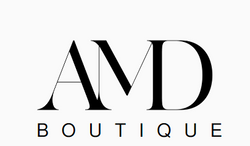Fashion Accessories Over The Last 100 Years
Women's accessories have undergone significant changes over the last 100 years, with trends shifting from practicality and functionality to a focus on aesthetics and style. From the roaring 20s to the present day, let's take a look at how women's accessories have evolved over the last century.
1920s: In the 1920s, women's accessories were characterized by a bold and flashy style that reflected the vibrant culture of the era. Flappers were known for their iconic bob hairstyles, which were often accessorized with headbands and hair clips adorned with feathers, beads, and jewels. Long beaded necklaces and earrings were also popular accessories that added a touch of glamour to any outfit.
1930s: During the Great Depression, practicality and functionality became more important in women's accessories. Scarves and hats became essential items to keep warm during the winter months, while brooches and pins were used to add a touch of elegance to otherwise simple outfits.
1940s: In the 1940s, women's accessories were heavily influenced by World War II. With rationing in place, many women turned to DIY fashion and started making their own accessories from leftover fabrics and materials. Women's hats also became smaller and simpler to conserve materials.
1950s: The 1950s marked a return to elegance and sophistication in women's accessories. Large and statement jewelry, such as chandelier earrings and oversized necklaces, were popular, along with gloves and handbags that matched the color and style of an outfit.
1960s: The 1960s saw a rise in the popularity of minimalism and simplicity in women's accessories. Natural materials like wood, leather, and woven fibers were favored, and jewelry became more understated with small and delicate pieces.
1970s: The 1970s brought about a bohemian influence in women's accessories. Long, flowing scarves and necklaces with pendants made from natural materials like stones and shells were popular. Hats also made a comeback, with wide-brimmed floppy hats and fedoras being worn as a fashion statement.
1980s: The 1980s were all about excess and opulence, and women's accessories reflected this with bold and flashy styles. Oversized earrings, chunky necklaces, and statement pieces adorned with crystals and rhinestones were popular, along with large and structured handbags.
1990s: In the 1990s, minimalism made a comeback with a rise in piercings and body jewelry, such as belly button rings and nose rings. The grunge movement also influenced women's accessories, with chokers and bracelets made from leather and chains becoming popular.
2000s: The 2000s marked a return to elegance and sophistication in women's accessories, with a focus on luxury brands and designer labels. Statement jewelry, such as oversized hoop earrings and diamond-encrusted necklaces, were popular.
2010s: The 2010s saw a rise in minimalism and versatility in women's accessories, with delicate layered necklaces, stacking rings, and tiny hoop earrings becoming popular. Personalized jewelry, such as monogrammed pieces and birthstone jewelry, also became popular.
In conclusion, the evolution of women's accessories over the last 100 years has been a reflection of cultural and societal values, as well as the changing fashion trends of each era. From practicality and functionality to a focus on aesthetics and style, women's accessories have come a long way, and it will be exciting to see what new trends will emerge in the coming years.




